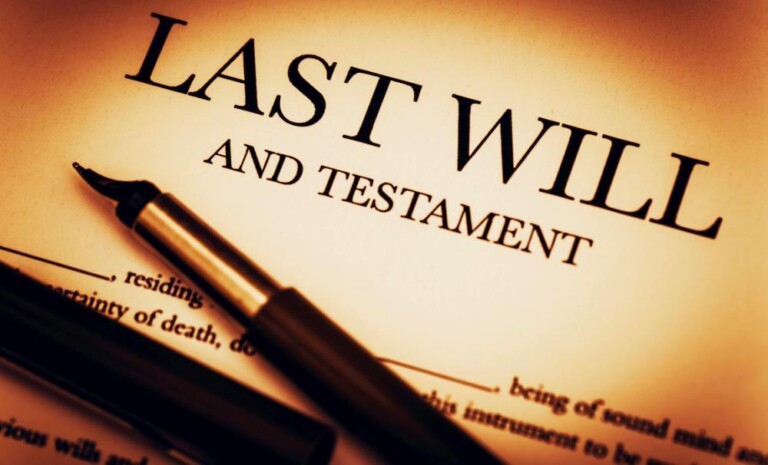
Authors: Richard Weiland, TEP and Zachary Murphy-Rogers
The COVID-19 pandemic has had a significant impact on global trade and the world’s economies. Each of North America’s major stock markets have experienced their worst first quarters since at least the 2008 housing market crash, and investment portfolios have suffered accordingly. This dramatic downturn could be significant for trustees who hold and invest assets on behalf of beneficiaries of trusts or estates. What steps should a trustee take and how can they minimize risk of liability in a time of volatile markets?
Trustee Liability for Investment Losses
In Fales v. Canada Permanent Trust Co., [1977] 2 S.C.R. 302, the Supreme Court of Canada held that the primary duty of a trustee is to preserve trust assets. The failure to do so could be considered a breach of duty if the trustee’s conduct did not meet the requisite standard of care. If a trustee is found by a Court to have breached a duty owed to the beneficiaries of the trust, the trustee can be held personally liable for the losses incurred by the trust and/or can be removed as a trustee.
Given that a trustee can face personal liability for investment losses, a trustee might seek to avoid risk by keeping trust assets in cash or in secure, low-return investments such as guaranteed investment certificates. However, at common law, trustees have a duty to invest the capital of a trust, and trustees can also face criticism for failing to generate adequate returns for the beneficiaries. Therefore trustees must invest trust assets in a manner appropriate to the circumstances.
In Ermineskin Indian Band and Nation v. Canada, 2009 SCC 9, the Supreme Court of Canada confirmed that there is no duty for a trustee to guarantee against the risk of loss or to guarantee an increase in the trust. Rather, the trustee need only invest prudently.
What is a Trustee’s Standard of Care for Investment?
Section 15.2 of British Columbia’s Trustee Act sets out the level or standard of care that a Trustee must use when investing: “a trustee must exercise the care, skill, diligence and judgment that a prudent investor would exercise in making investments.” Section 15.3 adds that a trustee will not be held liable for an investment loss if the conduct that led to the loss conformed to a plan or strategy for the investment of the trust property, comprising reasonable assessments of risk and return, that a prudent investor would adopt under comparable circumstances.
The “prudent investor” standard is an objective one: all trustees will be held to the same standard, regardless of their personal knowledge or experience. In Fales v. Canada Permanent Trust Co., cited above, the Supreme Court of Canada discussed that a higher standard of care may be expected of professional trustees or advisors with special skills. The Court did not finally decide that issue, but may revisit it in the future.
Generally, what it means to act like a prudent investor has come to be understood as:
- making the investments necessary to protect trust capital and to provide income;
- applying risk and return objectives that are reasonable and suitable to the circumstances;
- reasonably diversifying the investments; and
- if any part of the investment authority is delegated to an agent, delegating prudently.
Investing in Context
In order for a trustee to suitably determine risk and return objectives and invest accordingly, the nature and context of the trust must be considered. For example, if the trust has upcoming liabilities or will be making cash distributions in the near future, it will be important to maintain sufficient liquidity and minimize risk to a sufficient portion of the trust assets. If on the other hand the trust is expected to generate and distribute income over an extended period of time, the investments should be made with a view to increasing income, with greater tolerance for short-term capital risk.
Ontario’s Trustee Act sets out a list of criteria that trustees are required to consider when investing trust property:
- general economic conditions;
- the possible effect of inflation or deflation;
- the expected tax consequences of investment decisions or strategies;
- the role that each investment or course of action plays within the overall trust portfolio;
- the expected total return from income and the appreciation of capital;
- needs for liquidity, regularity of income and preservation or appreciation of capital; and
- an asset’s special relationship or special value, if any, to the purposes of the trust or to one or more of the beneficiaries.
British Columbia’s Trustee Act does not include a similar list. Nevertheless, Ontario’s list is a helpful one for a trustee to review to ensure that all of the relevant factors have been considered in the course of deciding on a prudent investment strategy.
Steps to Reduce Liability Risk
To minimize exposure to liability relating to investments, trustees should consider the following steps:
- Review the trust instrument to identify what, if any, powers or restrictions there are with respect to trust investments. If required, trustees should seek legal advice regarding the proper interpretation of the trust instrument, and the interaction of the terms of the trust with the duties set out in the Trustee Act and in the common law.
- Seek professional advice. A professional advisor can help a trustee to develop an investment plan or strategy with an appropriate risk/reward balance for the objectives of the trust and the needs of the beneficiaries. The trustee should request the plan in writing and retain a copy.
- Develop an investment plan. Even if professional advice is not obtained, the Trustee Act requires that trustees have an investment plan or strategy. Trustees should put their plan in writing, take notes during the development of the plan, and be prepared to justify their decisions by outlining the options that were available and the factors that were considered.
- Review the performance of the trust investments, and the appropriateness of the investment plan, on a regular basis – particularly after significant volatility in the stock markets. Rebalancing of investments may be required. If a professional advisor had been previously engaged, the trustees should meet with that advisor again to review the trust investments and the investment plan.
- Delegate to an agent. A trustee that is less experienced with investing may consider delegating their investment authority to an agent such as a broker or investment counsel. In this case the trustee authorizes the agent to make certain decisions about buying and selling investments. The trustee still must set the investment objectives, and must exercise prudence in selecting and monitoring the performance of the agent. The trustee should keep notes and documents relating to the selection of the agent, setting investment objectives, and regular review.
- Purchase fiduciary liability insurance. Fiduciary liability insurance can provide legal defence cost and indemnity coverage in the event that a trustee is sued or held liable for a breach of duty, including a breach relating to investments. It may be possible to pay the insurance premiums out of the trust, if the trust terms permit it or if the expense can be fairly characterized as a benefit to the beneficiaries. For example, if potential losses from improvident investment could exceed the trustee’s personal assets, liability insurance would help to make the beneficiaries whole in the event of a significant loss.
- Obtain beneficiary consents. If there are more risky investments (or, conversely, underperforming investments) that may not be considered prudent, but which the beneficiaries nevertheless want the trustee to keep, the trustee should consider having the beneficiaries sign a consent and indemnity agreement to mitigate against a future claim by the beneficiaries.




